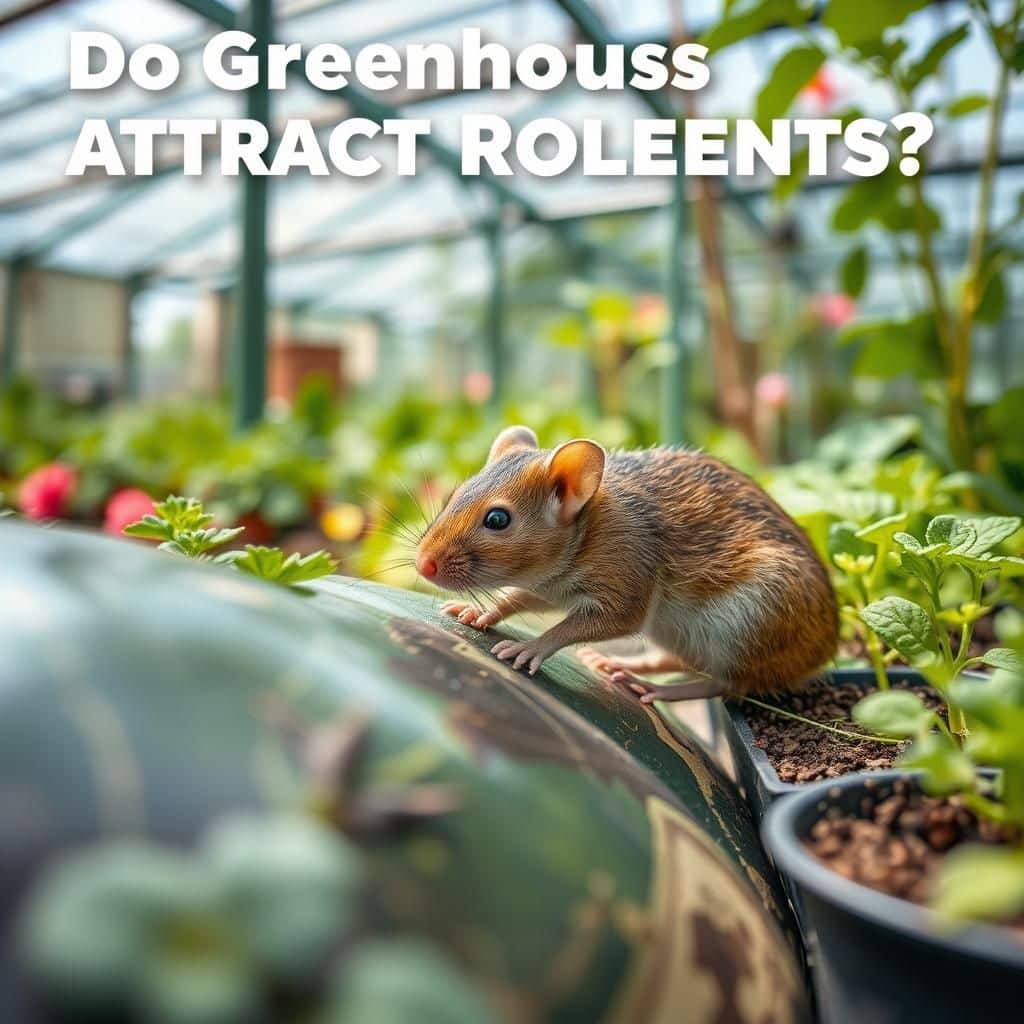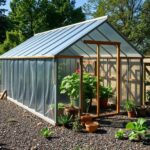Do Greenhouses Attract Rodents? Understanding the Risks and Prevention Tips

Greenhouses serve as ideal environments for cultivating plants, but they can also inadvertently attract a range of pests, including rodents. These creatures, drawn by the warmth and food sources, pose significant risks to both plants and overall greenhouse health. Understanding the factors that contribute to rodent attraction is essential for greenhouse owners and enthusiasts. This article delves into the potential risks associated with rodent infestations in greenhouses and offers practical prevention tips to safeguard your plants and maintain a thriving growing environment. By implementing effective strategies, you can enjoy the benefits of your greenhouse without the nuisance of unwanted visitors.
Do Greenhouses Attract Rodents?
Greenhouses can indeed attract rodents due to their warm and sheltered environment, which offers an ideal habitat for various species such as mice, rats, and squirrels. These pests are often drawn to the rich organic matter found in the soil and the potential food sources, including seeds, seedlings, and even fruits and vegetables. Additionally, if there are any gaps or openings in the structure, it becomes easier for rodents to gain access. Implementing effective pest control measures and maintaining cleanliness within the greenhouse can help minimize the risk of rodent infestation significantly.
Common Rodents Found in Greenhouses
Rodents such as mice, rats, and voles are commonly found in greenhouses. Mice are particularly good climbers and can easily navigate through small openings. Rats, on the other hand, tend to chew through materials to gain access, while voles often cause damage by gnawing on plant roots and stems. Each species has its own feeding habits and behaviors that can lead to significant losses in a greenhouse environment.
Conditions That Attract Rodents
Several conditions can create a welcoming environment for rodents in greenhouses. The presence of food sources, such as fallen fruits or seeds, provides a strong incentive for rodents to intrude. Additionally, the warmth and shelter that greenhouses offer during colder months can draw rodents seeking refuge. Poor maintenance, such as unkempt areas or clutter, can further increase the likelihood of a rodent infestation.
Prevention Methods
To prevent rodents from becoming a problem in greenhouses, it is vital to adopt various prevention methods. Regularly inspecting the structure for gaps or holes and sealing them can deter entry. Keeping the greenhouse clean and free from debris that could attract rodents is also essential. Furthermore, implementing practices such as using traps or natural repellents can effectively reduce the rodent population in and around the greenhouse.
See also:
Signs of Rodent Infestation
Identifying the signs of a rodent infestation early is crucial for effective management. Common indicators include gnaw marks, droppings, nests made from shredded paper or plant material, and noticeable damage to plants or containers. Listening for rustling noises, especially at night, can also indicate the presence of rodents. Prompt action upon discovering these signs can help prevent a more severe infestation.
Impact of Rodents on Greenhouse Plants
Rodents can cause significant damage to greenhouse plants if not controlled. They often feed on seedlings, roots, and even mature plants, leading to stunted growth or plant death. This not only affects crop yield but can also result in financial losses for growers. Their gnawing habits can also damage greenhouse infrastructure, leading to additional repair costs.
| Rodent Type | Common Damage | Feeding Habits |
|---|---|---|
| Mice | Gnawing on seedlings and containers | Seeds, fruits, and vegetables |
| Rats | Chewing through structures and eating plants | Roots, fruits, and stored food |
| Voles | Damage to roots and stems | Plant roots and tubers |
Identifying Signs of Rodent Infestations in Greenhouses
Rodent infestations in greenhouses can wreak havoc on both crops and the overall environment. Early identification is critical to minimizing damage and preventing further issues. Common indicators include chewed plants, nests made from shredded materials, and droppings scattered near food sources. Additionally, observing signs such as gnaw marks on structural components or burrows around the edges can help pinpoint areas of concern. Understanding these signs can assist growers in promptly addressing infestations before they escalate into larger problems.
Common Rodent Species Found in Greenhouses
Several common rodent species may invade greenhouses, including house mice, roof rats, and field mice. These animals are often attracted to the warmth and shelter provided by greenhouse environments, where they can find food and nesting materials. Each species has its own behavioral patterns; for example, house mice tend to reproduce quickly and can damage crops extensively, while roof rats are adept climbers and often nest in elevated areas. Recognizing which species are present is vital for implementing effective control measures.
How Rodents Can Damage Greenhouse Crops
Rodents pose a significant threat to greenhouse crops by feeding on plants, ruining produce, and transmitting diseases. They can consume seeds, seedlings, and mature plants, reducing yield and quality. Beyond direct damage, they can introduce pathogens through their droppings and urine, potentially leading to further crop loss and contamination. Consequently, understanding the extent of the harm rodents can inflict is essential for any greenhouse operator dedicated to maintaining healthy plants.
See also:
Effective Prevention Strategies for Greenhouses
Preventing rodent infestations in greenhouses requires a combination of physical and hygienic measures. Regularly cleaning and removing debris, such as leftover plant materials and possible nesting sites, is crucial. Additionally, sealing any gaps or openings in the greenhouse structure will help deter entry. Utilizing traps and humane deterrents can help manage populations, while maintaining a tidy environment contributes to reducing the attractiveness of the greenhouse for rodents. Establishing these practices can significantly lower the risk of infestation.
Natural Predators and Their Role in Control
Introducing natural predators into the greenhouse environment can be an effective strategy for controlling rodent populations. Animals such as cats or certain birds can help maintain lower rodent numbers, as they naturally prey on these pests. However, it's essential to select appropriate predators that won't harm the plants or disturb the greenhouse ecosystem. The balance between encouraging natural predation and implementing traditional management strategies is crucial for a thriving greenhouse.
Monitoring and Maintenance for Long-Term Success
Consistent monitoring and maintenance are necessary for long-term success in preventing rodent issues within greenhouses. Regular inspections can identify early signs of rodent activity, allowing for prompt interventions. Implementing a routine schedule for checking traps, cleaning areas where rodents might hide, and assessing the integrity of the greenhouse structure can help in sustaining a rodent-free environment. By fostering a proactive approach, greenhouse operators can significantly mitigate the risks associated with rodent infestations.
Questions from Our Readers
Do greenhouses attract rodents?
Yes, greenhouses can attract rodents primarily due to the availability of food, shelter, and warmth. The plants and organic matter inside, along with stored seeds, can be a significant food source for pests like mice and rats. Maintaining cleanliness and proper storage can help minimize this risk.
What can I do to prevent rodents in my greenhouse?
To prevent rodents in your greenhouse, it is essential to keep the area clean and free from debris. Ensure that all seeds and plant materials are stored securely, and consider using rodent-proof bins. Additionally, sealing any gaps in the structure can help keep these pests out.
See also:
Are certain plants more likely to attract rodents?
Yes, some plants can attract rodents more than others, particularly those that produce seeds or fruits. Plants like lettuce, tomatoes, and other vegetables may draw rodents. To reduce attraction, you might consider using repellent plants or implementing barriers.
How can I safely remove rodents from my greenhouse?
For safe removal, you can use humane traps to catch rodents without harming them, allowing for relocation away from your greenhouse. Additionally, consider consulting with a pest control professional who can provide effective and safe solutions tailored to your specific situation.

If you want to read more articles like Do Greenhouses Attract Rodents? Understanding the Risks and Prevention Tips, we recommend you check out our Greenhouse category.
Leave a Reply
Related Articles